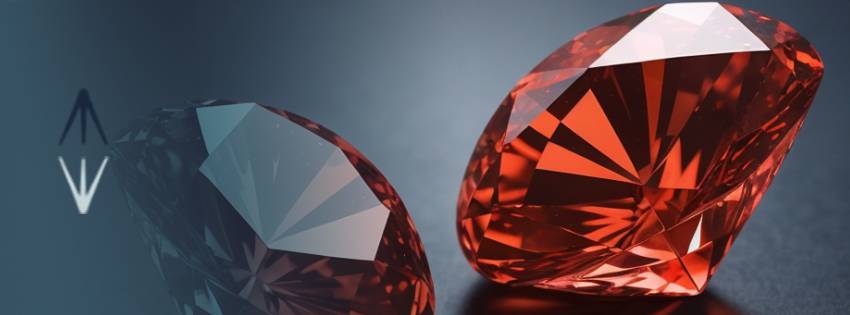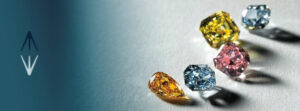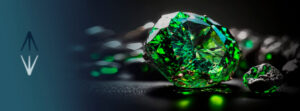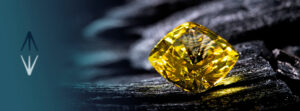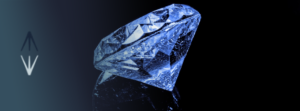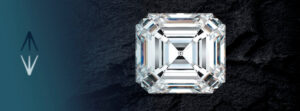Red diamonds are one of the rarest and most valuable gems in the world. Their unique color and incredible scarcity make them highly sought after by collectors and jewelers alike. In this article, we will explore the characteristics that make red diamonds so special, their history, the formation process, and why they hold such value in today’s market. Additionally, we will discuss the symbolism and cultural significance of these diamonds, as well as best practices for their care and maintenance.
What are red diamonds?
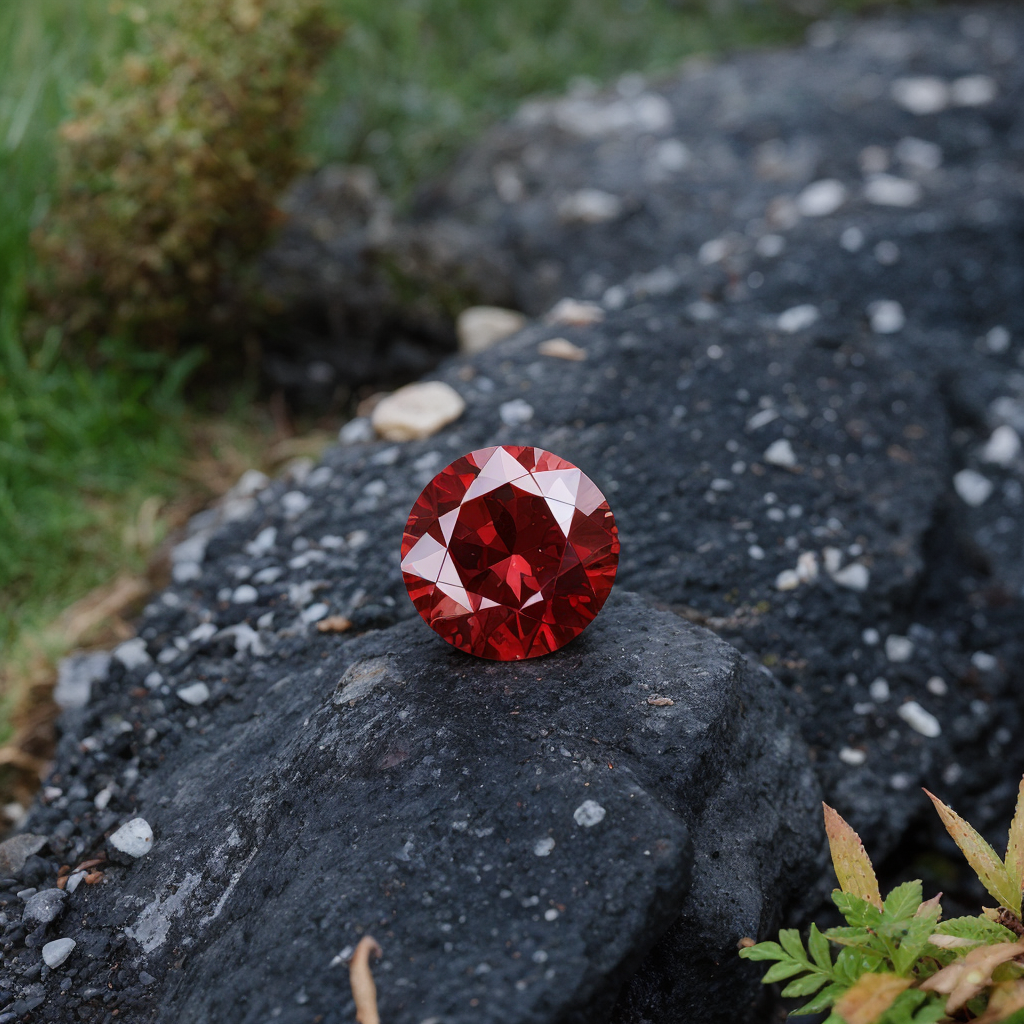 Red diamonds are extremely rare natural color diamonds. Unlike colorless diamonds, red diamonds get their color from structural deformation during their formation. This deformation causes a distortion in the diamond’s crystal lattice, resulting in the absorption of light and the manifestation of the red color.
Red diamonds are extremely rare natural color diamonds. Unlike colorless diamonds, red diamonds get their color from structural deformation during their formation. This deformation causes a distortion in the diamond’s crystal lattice, resulting in the absorption of light and the manifestation of the red color.
Characteristics of red diamonds
Red diamonds have several distinctive characteristics that make them unique:
- Color: The color of red diamonds ranges from a deep pink to a pure, intense red. This color is the result of plastic deformation in the diamond’s crystal structure, known as a slip band, which alters how light interacts with the diamond.
- Rarity: Red diamonds are extremely rare. It is estimated that fewer than 30 natural red diamonds have been found to date. Most of these diamonds are small, generally less than half a carat.
- Location: Most known red diamonds come from the Argyle mine in Australia, famous for producing a wide range of colored diamonds. However, this mine ceased production in 2020, making these diamonds even more valuable and harder to find.
History and Origin of Red Diamonds
The discovery of red diamonds dates back centuries, with them being found in exotic locations such as India, Brazil, and more recently, Australia. These diamonds, due to their extreme rarity, have not been as well-documented as other types of colored diamonds, adding an air of mystery to their history.
Ancient Discoveries
In India and Brazil, red diamonds were occasionally found in alluvial deposits along with other types of diamonds. For many years, the cause of their unique coloration was not fully understood, and they were simply considered extremely rare diamonds.
The Argyle Mine
The discovery of the Argyle mine in Australia in the 1980s marked a significant milestone in the history of red diamonds. This mine is famous for being one of the most prolific sources of colored diamonds, including reds. The Argyle mine has produced some of the world’s most notable red diamonds, significantly contributing to the knowledge and availability of these gems in the market.
The Most Famous Red Diamonds
Among the most famous red diamonds are the Moussaieff Red Diamond and the Hancock Red Diamond.
- Moussaieff Red Diamond: This 5.11-carat diamond is known for its pure red color and exceptional size for a red diamond. It was found in Brazil in the 1990s and is considered one of the largest and most valuable red diamonds in the world.
- Hancock Red Diamond: Weighing only 0.95 carats, the Hancock Red Diamond is small in size but big in history. This diamond was acquired by collector Warren Hancock in 1956 for a modest amount and later sold in 1987 for over $880,000, highlighting its immense value and rarity.
Formation and Coloration Process of Red Diamonds
Red diamonds form at great depths beneath the Earth’s surface, where conditions of pressure and temperature are extreme. Their distinctive red color is the result of a rare deformation in the diamond’s crystal structure during formation. This peculiarity sets them apart from other colored diamonds, such as blue or yellow diamonds, whose coloration is due to the presence of impurities like boron or nitrogen.
Formation at Great Depths
Diamonds form in the Earth’s mantle, at depths between 140 and 190 kilometers, where temperatures can reach 1200°C and pressures are extremely high. Red diamonds, like other diamonds, form under these extreme conditions over millions of years.
Plastic Deformation
The red color of these diamonds is caused by plastic deformation in the carbon crystal structure. Unlike other colored diamonds, which get their coloration from chemical impurities, red diamonds owe their color to a distortion that alters the way they absorb and reflect light. This deformation is extremely rare, explaining the scarcity of these diamonds.
Red diamonds are a marvel of nature, appreciated not only for their beauty and rarity but also for the fascinating history and intricate formation process that gives them their distinctive red color. Their discovery in historical mines and formation under extreme conditions make each red diamond a unique and invaluable piece.
We will continue to explore the market value of red diamonds, their symbolism and cultural significance, and best practices for their care and maintenance.
Value and Market of Red Diamonds
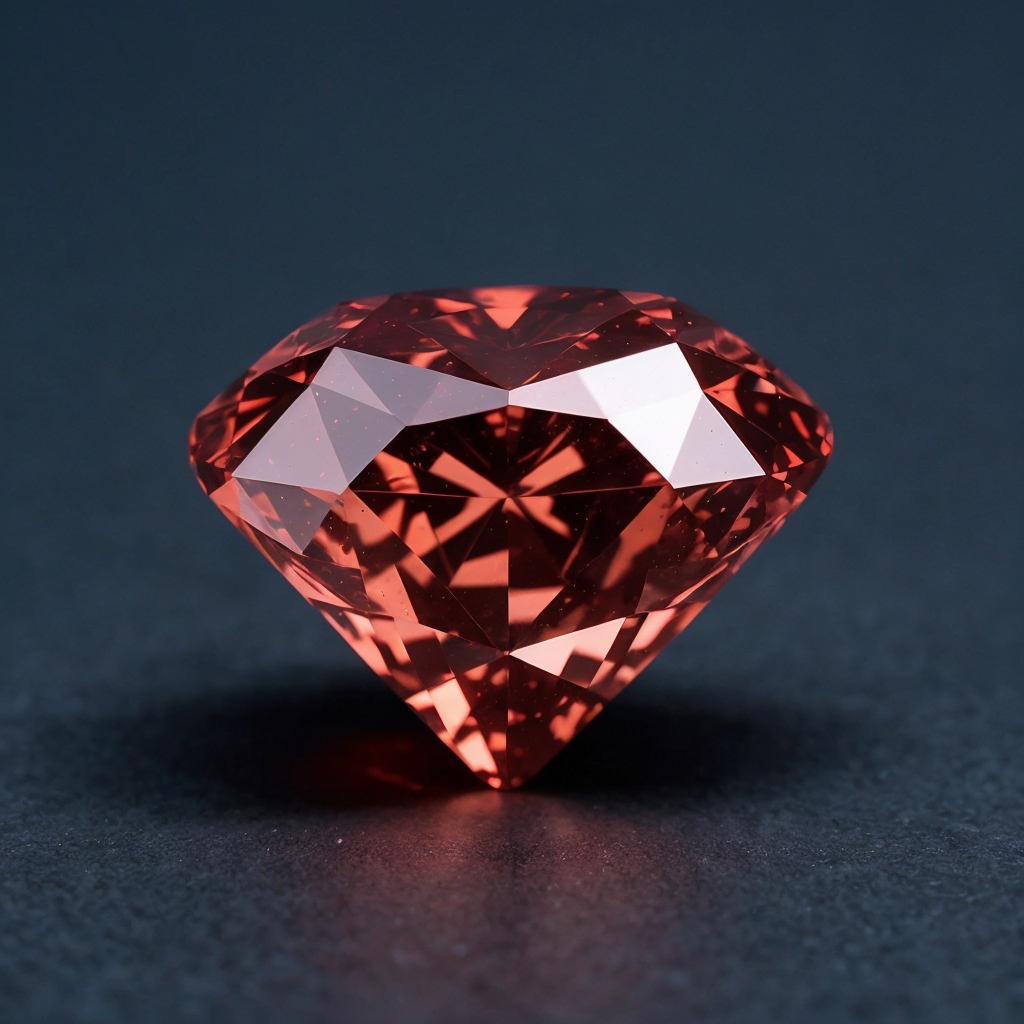 In today’s market, red diamonds are extremely valuable, fetching astronomical prices at auctions and private sales. The combination of their extreme rarity and aesthetic appeal contributes to their high price. Factors such as size, quality, origin, and purity play crucial roles in determining their value.
In today’s market, red diamonds are extremely valuable, fetching astronomical prices at auctions and private sales. The combination of their extreme rarity and aesthetic appeal contributes to their high price. Factors such as size, quality, origin, and purity play crucial roles in determining their value.
Determining Factors of Value
- Rarity: Red diamonds are so rare that it is estimated there are only a few in the world. This scarcity makes them extremely desirable and valuable.
- Size: As with all diamonds, size is a significant factor. A large red diamond is even rarer and, therefore, more valuable.
- Quality: The purity and cut of the diamond affect its value. A red diamond with fewer inclusions and a perfect cut will have a much higher value.
- Origin: Diamonds from renowned mines like the Argyle mine may have additional value due to the source’s reputation.
Record Sales
- Moussaieff Red Diamond: This 5.11-carat diamond, known for its pure red color, sold for millions of dollars, highlighting the high demand and prestige associated with these gems.
- Hancock Red Diamond: This small 0.95-carat diamond sold for over $880,000 in 1987, underscoring its extraordinary value.
Red diamonds, with their combination of rarity and beauty, remain a luxury investment and a symbol of status and wealth in the gemstone market.
Significance and Symbolism of Red Diamonds
Culturally, red diamonds have been symbols of passion, power, and wealth. Their vibrant red color is often associated with intense love and vitality, making them ideal gifts for special occasions such as anniversaries and engagements.
Cultural Significance
- Passion and Love: The red color traditionally symbolizes passion and love. A red diamond in a piece of jewelry can represent deep and lasting love.
- Power and Wealth: Historically, red has also been associated with royalty and authority. Owning a red diamond is a sign of status and luxury, emphasizing the power and wealth of its owner.
- Uniqueness and Exclusivity: Due to their extreme rarity, red diamonds are seen as symbols of exclusivity and uniqueness. Owning one means possessing one of the rarest gems in the world.
In jewelry, red diamonds are especially prized not only for their rarity but also for their dazzling color, making them standout pieces in any gemstone collection.
Care and Maintenance of Red Diamonds
To maintain the beauty and value of a red diamond, it is essential to follow proper care practices. This not only preserves the gem’s appearance but also protects your investment.
Care Practices
- Regular Cleaning: Clean your red diamond with a soft cloth and specific jewelry products. Avoid using harsh chemicals that could damage the surface of the gem.
- Safe Storage: Store your diamond in a safe place, preferably in a padded jewelry box to avoid scratches and impacts. Keep it separate from other jewelry to prevent damage.
- Certification: Ensure your red diamond is certified by a recognized authority, such as the GIA (Gemological Institute of America). This not only verifies its authenticity but also its quality and specific characteristics.
- Insurance: Consider insuring your diamond against possible damage, theft, or loss. This will provide peace of mind and financial protection in case of any incident.
Following these care tips, your red diamond will not only maintain its impressive appearance but also preserve its value over time.
Frequently Asked Questions about Red Diamonds
How rare are red diamonds?
Red diamonds are extremely rare. It is estimated that fewer than 30 natural red diamonds have been found to date. Most of these diamonds are small, generally less than half a carat.
What makes red diamonds so valuable?
The value of red diamonds is determined by their rarity, color intensity, size, quality, and origin. Their extreme scarcity and the unique red color resulting from plastic deformation in the diamond’s crystal structure contribute significantly to their high market value.
Where are red diamonds found?
Most known red diamonds come from the Argyle mine in Australia, famous for producing a wide range of colored diamonds. However, red diamonds have also been found in India and Brazil. The Argyle mine ceased production in 2020, making these diamonds even more valuable and harder to find.
How should I care for my red diamond?
To maintain the beauty and value of a red diamond, follow these care practices:
- Clean it regularly with a soft cloth and specific jewelry cleaning products.
- Store it safely in a padded jewelry box, separate from other jewelry to avoid scratches.
- Ensure it is certified by a recognized authority, such as the GIA.
- Consider insuring it against potential damage, theft, or loss.
What is the most famous red diamond?
The most famous red diamonds include the Moussaieff Red Diamond and the Hancock Red Diamond. The Moussaieff Red Diamond, at 5.11 carats, is known for its pure red color and exceptional size. The Hancock Red Diamond, weighing only 0.95 carats, is notable for its historical significance and high value.
Can red diamonds be artificially created?
Yes, red diamonds can be artificially created in laboratories through processes such as high-pressure, high-temperature (HPHT) treatment or chemical vapor deposition (CVD). However, these synthetic red diamonds are distinguishable from natural red diamonds and are generally less valuable.
What is the symbolism of red diamonds?
Red diamonds symbolize passion, power, and wealth. The red color is often associated with intense love and vitality, making them ideal for special occasions like anniversaries and engagements. Historically, red has also been linked to royalty and authority, representing status and luxury.
By understanding these aspects of red diamonds, from their rarity and formation to their market value and care, you can appreciate why they are considered some of the most unique and valuable gems in the world.

